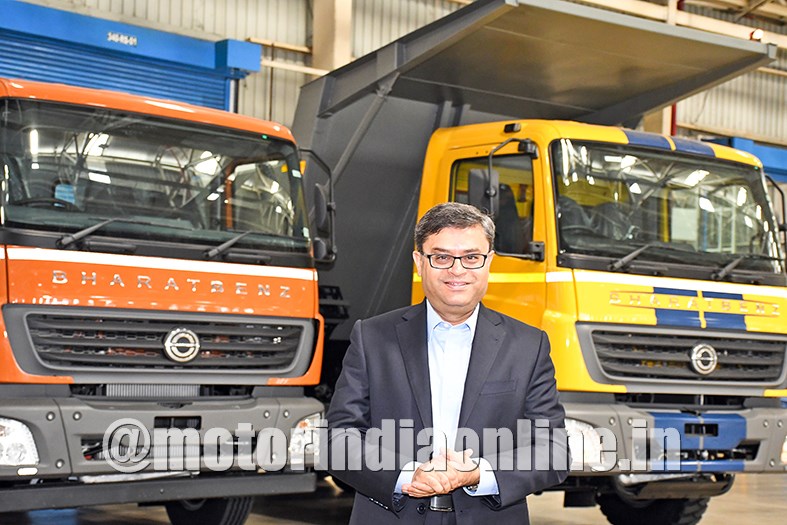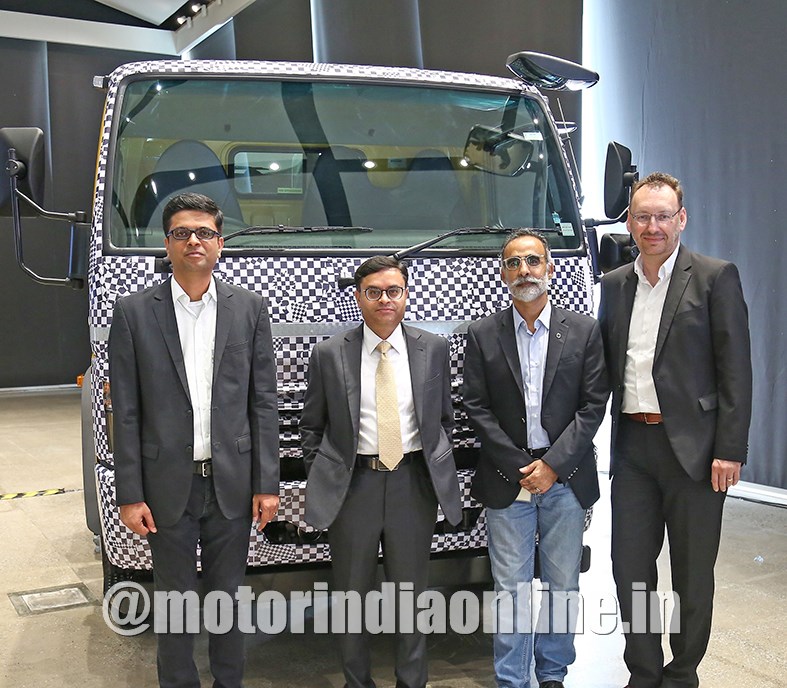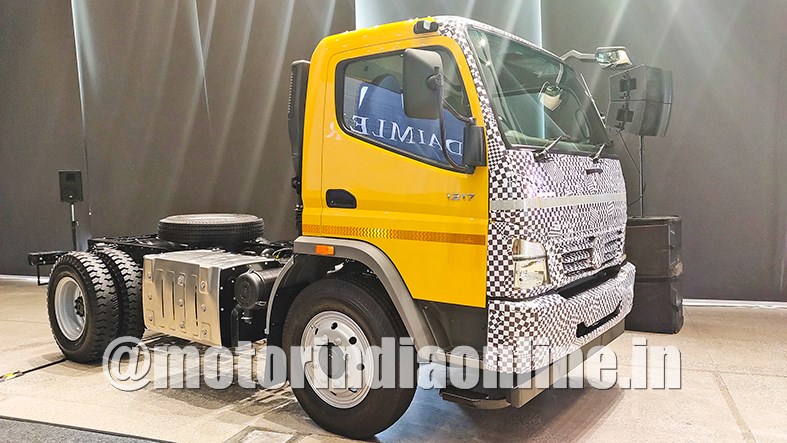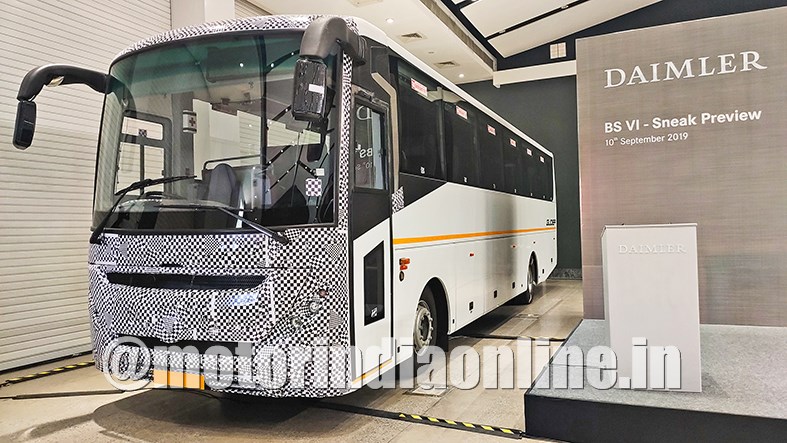Using their global experience with emission standards, Daimler India Commercial Vehicles (DICV) took a pioneering step to comply with BS-VI in India by investing around Rs. 500 crores to localize their Euro VI technology in addition to completing over two million kilometres of testing and developing new facilities. N. Balasubramanian finds out more from DICV’s BS-VI sneak preview held in Chennai

Daimler India Commercial Vehicles (DICV) seems to be eagerly awaiting the onset of the BS-VI emission norms in the country. The CV maker gave a glimpse as to why it apparently has a pole position in the BS-VI race that starts on April 1 next year. Worldwide, Daimler has already sold over 1.4 million vehicles with Euro VI technology, an equivalent emissions standard to BS-VI. The company has not used a ‘copy-paste’ approach to just bring in European Euro VI technology to meet BS-VI but has stuck to its philosophy of designing, developing and manufacturing locally for the domestic market that has seen it emerge as one of the strongest contenders in the country’s CV industry during the current decade.
DICV received BS-VI certification for one of their heavy-duty truck models in July this year, proving they have successfully adapted their expertise with Euro VI to the Indian market. The company hosted a BS-VI sneak preview event at the company’s Oragadam plant in Chennai where Satyakam Arya, Managing Director and CEO, DICV, made an excellent presentation that covered a wide range of topics including why India’s BS-VI transition is one-of-a-kind and an ominous challenge; how Bharat Benz’ global experience gives it an edge over competition; the exciting new export opportunities the new emission norms bring along; and the preparations underway at the company to gear up its sales and service network across the country.
Arya started off saying: “BS-VI is perhaps the most important regulation the automotive industry in India has faced. Up to 15 of the 20 most polluted cities in the world are in India which clearly shows the need for such a regulation. What India is going to do is something no other country has done so far. It took 12 years for Japan and eight years for Europe to shift from Euro IV (or equivalent) to Euro VI (or equivalent). In India, we are not only skipping BS-V but we are taking a leap from BS-IV to BS-VI in three years’ time. So, the entire industry has put in tremendous hard work over the last two years to make it happen and I am happy that most of us are ready with the technology.”

While the total cost of ownership (TCO) is a common term globally, it was made a buzzword of sorts in the Indian context after Bharat Benz’ market entry. The company has ridden the TCO wave and proven the superiority of its products over competition over the vehicle lifecycle and now hopes to do the same once BS-VI kicks in. “Ever since its market launch, Bharat Benz has offered the lowest TCO to customers. With the implementation of BS-VI we are going to challenge this further by further increasing the fuel efficiency of our trucks compared to BS-IV and further reduce the maintenance costs. Along with BS-VI, we will also be upgrading our entire portfolio to meet the new GVW ratings,” Arya explained.
Leveraging global experience
Being a global market leader in trucks, Daimler has over a decade of experience in Euro VI technology, with more than a million vehicles in the emission standard or equivalent running in different parts of the world. “Daimler’s experience of already bringing 1.4 million Euro VI trucks and buses on the roads means we are easily ready to transition our Bharat Benz trucks and buses to BS-VI by the April 2020 deadline. We will not experiment with our customers but will give them the best products with technology that has been proven in different markets around the world,” Arya said.
Sharing further insights on Daimler’s global expertise, Dr. Robert Wodrich-Kotzick, Global Powertrain, Daimler AG, said: “We are really happy with what we have achieved with BS-VI in such a short span of time. Daimler rolled out its first Euro VI truck in Europe in 2010 for which development had started five to six years earlier; this means we have over 15 years of experience in Euro VI which has helped us a lot in getting ready for BS-VI.” DICV has invested around Rs. 500 crores to localize their Euro VI technology for India, completing over two million kilometres of testing, developing new facilities and over 1,000 new parts while achieving a localisation rate of over 80% of its products.
Dr. Wodrich-Kotzick added: “It is estimated that Daimler’s Euro VI trucks, buses and construction equipment have covered more than 500 billion kilometres around the globe which shows how successful we have been. We came up with a plan to use our global resources and empower our colleagues in Chennai to develop suitable technology for BS-VI, specifically designed for the Indian market and also for exports.”
Elaborating on DICV’s focus on localisation, one of its key success factors thus far, Pradeep T, Head – Product Engineering, DICV, explained: “Our existing range of products have over 90% local content. For BS-VI we have already crossed 80% localisation and have a roadmap to reach 90% in the near future. We will stick to our philosophy of high local content even for such high technology which is an opportunity for the entire industry, especially our country’s excellent supplier base, to go for a technology upgrade.”
Elaborate testing
When Daimler decided to set up shop in India, the first facility that had come up, even before the production plant, was its test track. That has been the importance given to testing at DICV right from day one, helping the company to reap rich rewards with its products excelling on the field. With BS-VI, the testing approach has been no different and as Pradeep pointed out: “We have had to adapt and adjust the Euro-VI technology to suit local usage conditions. A lot of effort went into optimizing the driveline and making it suitable for the Indian market. Our BS-VI trucks have gone through more than two million kilometres of on-road testing across the country and also in other parts of the world including Germany and South Africa. We have also done over 2.5 million kilometres equivalent bench-testing for our engine, after-treatment systems and other parts.”
Beefing up after-sales
DICV is also gearing up its after-sales network with learnings from other markets. The company has incorporated its competencies into the training modules at its dealerships which now spread across India with over 200 customer touch-points nationwide. Talking about the efforts being put in on the after-sales side, Arya said: “The most important challenge in terms of after-sales is to prepare the entire network for BS-VI technology in terms of readiness with necessary diagnostics systems and repair know-how. We are currently training our service advisors and mechanics and this work will continue till we are ready for the launch.”
“The second challenge we as a country have to deal with carefully is the quality of AdBlue available across the country. The government must ensure the quality is maintained through proper standards. The third one might not be an immediate challenge but is one for the future. The after-treatment system in BS-VI needs cleaning after a certain period of time – maybe two to three years after first usage. We need to ensure the market is prepared for the same with necessary infrastructure across the country,” he added.
Export opportunities
Since 2013, DICV has exported its trucks to 50 countries across Africa, Latin America, Middle East and Asia. In August, the company exported its 25,000th vehicle from its Oragadam plant. The BS-VI era would further expand its horizon for exports, an area which the company is fully ready given its global presence. “The transition to BS-VI opens up more opportunities for us to export fully-built vehicles, engines and parts to countries like Mexico, Chile and Brazil that will soon migrate to similar emission norms. This further strengthens India’s position as a global production network for Daimler trucks and buses,” Arya explained.
Depending on the availability of BS-VI fuel in India, DICV will officially launch its upgraded range of BS-VI trucks and buses in the first quarter of 2020. The company plans to commence exports of its OM926 engine series internationally by 2021-22.

